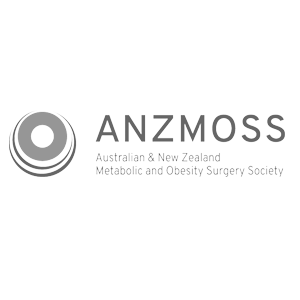Very Low Calorie Diet
The Very Low Calorie Diet (VLCD) is often used before weight loss surgery to shrink the liver, this allows it to be retracted far away from the stomach and helps prevent surgical complications. The VLCD can last from anywhere between 2-6 weeks prior to surgery. A patient’s starting BMI and liver size on ultrasound will guide the surgeon’s recommendation as to how long this period lasts. The VLCD is less than 800 kcal/day and makes use of shakes, bars and soups along with vegetables, salads and plenty of water.
The VLCD causes a significantly lower amount of carbohydrates to be consumed than normal and cutting down to this level can lead to symptoms of sugar withdrawal, the severity of which depends on how much added sugar you were consuming from processed foods and drinks before starting the VLCD. Symptoms include hunger, cravings, headaches, lack of energy, brain fog, irritability and low mood. These will be most intense for the first 3-4 days and it is recommended that you start the diet when you have a lower amount of work stress and time to look after yourself.
How does the liver shrink?
The VLCD induces a water diuresis, ie the amount you urinate will increase. The majority of the diuresis is due to glycogen breakdown in liver and muscles. In the first few hours of fasting the sugar (glucose) circulating in your blood begins to fall, when it does not get replaced by food, the body turns to its stored form of glucose- called glycogen. Glycogen is a long chain of glucose molecules all attached together in a row and exists in your liver and muscles. For every 1 gram of glycogen there are 3-4 grams of water associated around the molecules, so when the glycogen gets broken down and used up water leaves the liver and gets urinated out and so the liver shrinks in size.
Will I be in ketosis on VLCD?
Ketosis is a backup mechanism for the body to survive in periods of food shortage. It can be easier to sustain a longer VLCD if you are in ketosis as hunger and cravings are greatly reduced. Some patients may go into ketosis on the VLCD and some will not depending on starting weight, protein intake and activity levels. If you are not sure if you are in ketosis you can check with a urine dipstick bought from your local chemist. If there are no ketones in your urine then you need a tighter carbohydrate restriction to get into ketosis.
The amount of carbohydrates in typical VLCD portions are:
- Shake- 18.2 grams
- Bar- 23.4 grams
- Soup- 18.2 grams
When you add these up, along with any other food consumed the overall carbohydrate intake is over 60 grams per day. Keto diets by contrast are defined as less than 50 grams of carbohydrate per day.
A keto approach to the VLCD is called the Very Low Calorie Ketogenic Diet (VLCKD) and is a well described protocol that should be performed under the supervision of a weight loss clinician. A recent meta-analysis for this approach has been published with 12 studies including 801 patients evaluated. Only diets with ketogenic phases of at least 4 weeks were included and the results showed an average weight loss of 15.6kg with waist circumference reduction of 12.6cm1.
How does the keto diet work?
One of the main roles of carbohydrates is to bind fat within fat cells so it remains stored and can’t be released to be burned for energy, when there are no carbs in the diet it causes the fatty acids to become free within the cell so they can be actively transported into the blood stream.
A lack of carbs also effects 3 major hormones to increase fatty acid transport out of fat cells: there is less insulin from the pancreas, more glucagon from the pancreas and increased glucocorticoids from the adrenal glands.
When large quantities of fatty acids become available they travel to the liver and are converted to chemicals called ketone bodies which pour out of the liver and travel to organs to be used as an alternative fuel source. These ketone bodies are what reduce hunger and craving and help adherence with the diet.
Is the keto diet safe?
Ketogenic diets the are over 800 kcal/day are by definition high fat diets because if protein was used to increase calories then the liver would start taking the amino acids from the protein and turn them into glucose, a process called gluconeogenesis and when glucose is present then ketosis will stop.
It is a worry that every study involving the ketogenic diet shows an increase in LDL cholesterol. It has been clearly demonstrated in clinical trials that LDL cholesterol is the cause of atherosclerosis which leads to heart attack, stroke and kidney disease. While a short period of raised LDL is not likely to impact the overall life-time risk of these problems there is no data available to say long-term keto is safe in this regard.
The long-term approach for most patients is to avoid the extremes and reduce carbohydrates but not down the level ketogenic diets require. Refined sugar, rice, bread, pasta, potato and processed foods should be avoided in routine use. The carbohydrates that can be consumed are fruit and vegetables- they have a low caloric density, are high in fibre and rich in vitamins that the body needs to function.
- Castellana et al. 2020. Efficacy and safety of very low calorie ketogenic diet (VLCKD) in patients with overweight and obesity: A systematic review and meta-analysis. Journal of Reviews in Endocrine and Metabolic Disorders.






